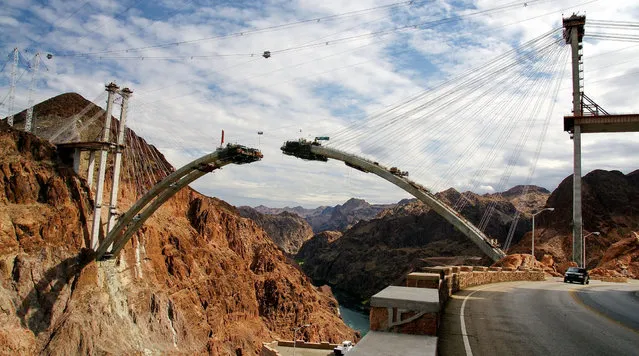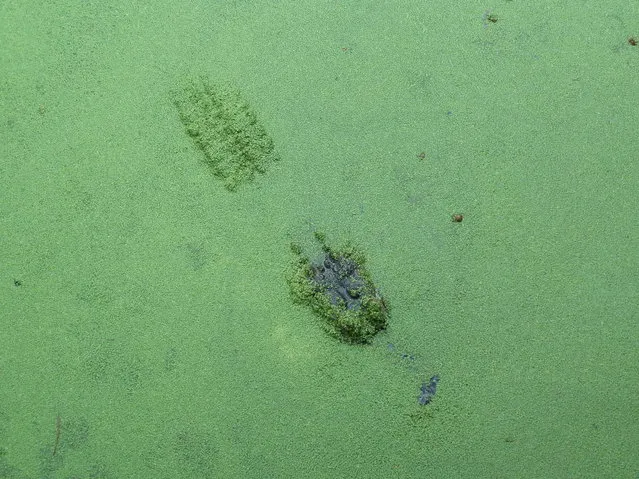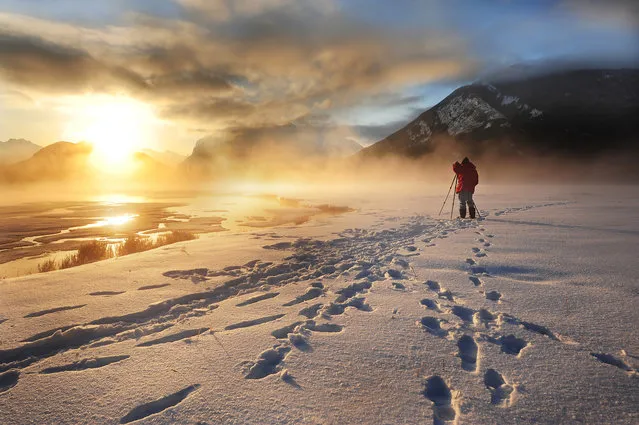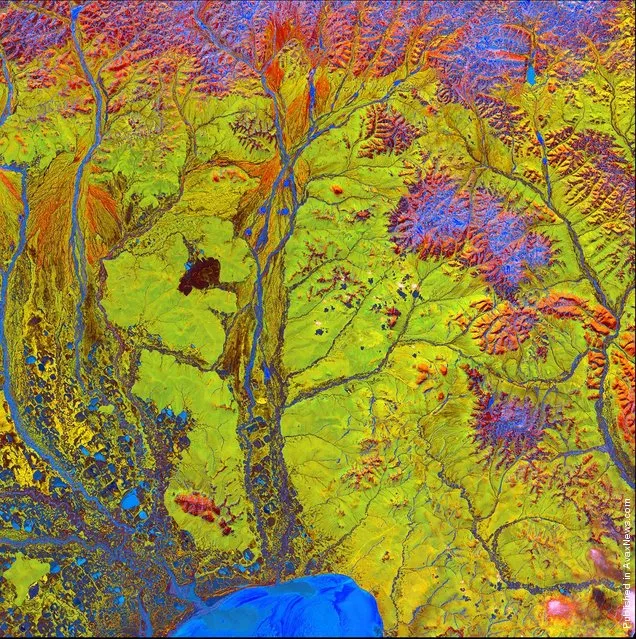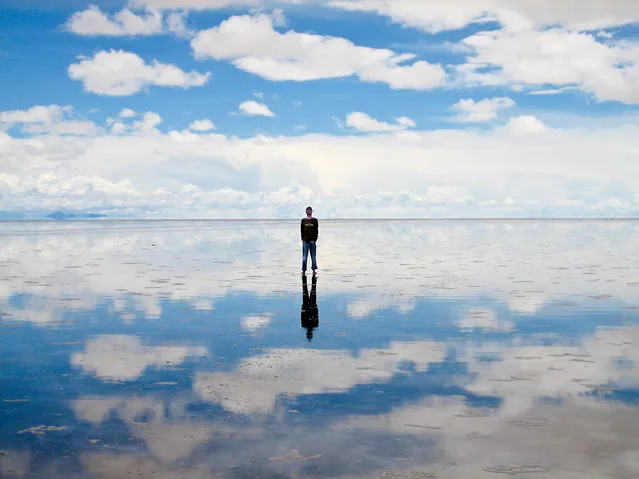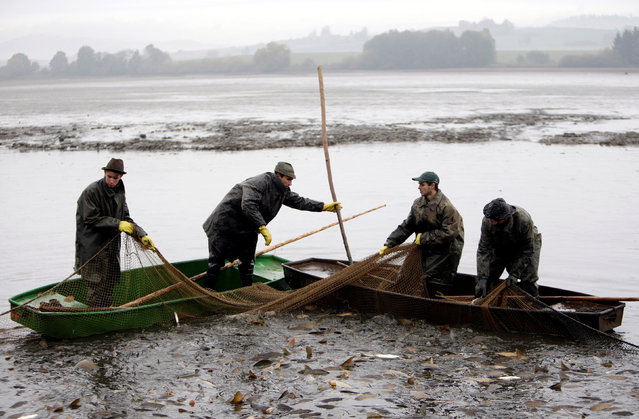
Fishermen pull a net containing fish from a pond during the traditional carp haul near the village of Belcice, Czech Republic, October 25, 2016. Carp, the traditional Czech Christmas Eve dinner, is harvested primarly from the region of southern Bohemian lakes. (Photo by David W. Cerny/Reuters)
26 Oct 2016 10:42:00,post received
0 comments


